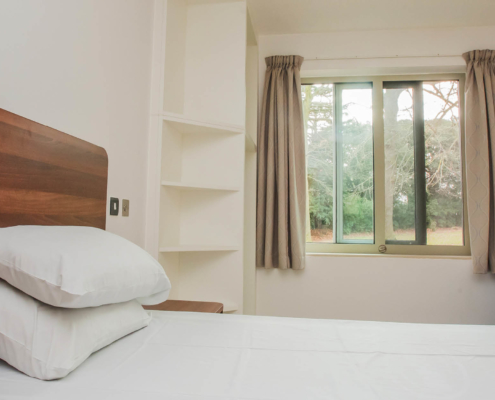Since its inception in 2006, Britplas’ Safevent window for mental health has evolved through 8 models whilst the sill used has remained the same until recently.
With every detail of our proprietary window products under constant review, our dedicated research and development department has recently been focusing on improvements to the sill design of the Safevent. Key to the drainage efficiency and the overall aesthetics of the window, the development process has resulted in a new, mental health specific, Safevent variant with four brand new sill profiles for both internal and external sliding Safevents following a 6-month process.
By switching from face drained to bottom drained sills, we removed the need for press-in plastic drainage caps and minimised the chances of the drainage channel being blocked, creating a more efficient system.
The Britplas way
Bright Thinking is one of our core values at Britplas, and the continuous improvement of our products through the R&D department is key in Britplas maintaining this principle. The Safevent window, our flagship product for the mental health sector, is always under review. The new sill is the latest adaptation using our philosophy to ensure that clients have access to the best products and service possible
Britplas’ Research and Development Manager Steve McGuire explains more about this latest development:
How long did the process take?
The process took around 6 months – the new sills were designed in about a month. We then had to produce die drawings and source which thermal breaks would work best with the extrusions. Accurate die drawings were then sent out to 3 extruding companies for pricing. We then produced a cost comparison spreadsheet to compare all the extrusion costs including die costs. The next task was to look at rolling and painting costs from the powder coaters. This all took around 6 weeks.
The next stage involved ordering sample extrusion lengths for testing. Drainage test results for all four sill profiles were excellent, so we knew we had cracked the design. Production was ordered including extrusion, rolling and painting, and we prepared the product for internal launch including the creation of an ECN pack, issuing of Britplas part numbers and drawings for the sills and end caps, and full briefings held with our procurement, design, production and sales teams.
When was the Safevent mental health sill last altered?
The Safevent sill design has not altered significantly over the past six years.
What extra functionality has been added and why is this important in mental health?
By switching from face drained to bottom drained sills, we have been able to remove the press-in plastic drainage caps which service users could potentially break off the windows leaving unsightly slots in the face of the Safevent. There was also the possibility of blockage due to the path of the drainage through the frames.
By switching the drainage through the bottom of the frames, no slots are visible so there is no need for plastic drain covers any longer. This has also allowed us to extend the drainage slots through the frame to allow water to drain through the system much more quickly and effectively. This prevents any water from pooling in the frame.


